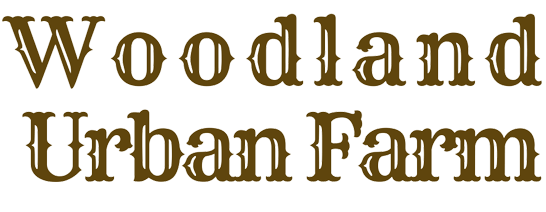Franklin County is writing new regulations regarding the keeping of poultry and rabbits on properties smaller than five acres in unincorporated townships. The good news is that for people living on lots smaller than one acre, you can finally keep chickens or ducks–not as many as in the City of Columbus if you have a small yard, but more than you could before.
The bad news…well, I’m not sure if it’s bad news or not. The old regulation prohibited animal agriculture on lots under five acres if they fit a certain description. Because our lot didn’t quite fit that description, it looked like we were exempt. The new regulation says it only covers the same lots covered by the old regulation. That would appear to mean that our lot is just as exempt from the new rule as it was from the old one.
If, for whatever reason, they decide that the new code does apply, it would basically outlaw any commercially viable animal agriculture on our land. The county planning and development office asked for stakeholder input on this about a month ago, and I sent them my recommendations. It appears that someone there read those recommendations very carefully, and then, point by point, did the exact opposite of every one of them.
If you have one acre, you’d be able to have up to 6 chickens or ducks (or a combination thereof, not to exceed six birds in total). But if you have 4.99999 acres, you can only have 8 birds. If you have 5.00001 acres, you can have thousands of birds, because you’re only regulated by state law at that point, and Ohio likes farms. (It’s a little fuzzier what the rule is if you have exactly five acres.) So, six birds an acre up to one acre. Then if you have 1.0001 acres, you can have eight birds. Two acres, no more birds, just the eight. Three acres, same thing, just eight. Four acres, again, just eight. Over five acres? You can open a CAFO. Once you have more than one acre, the allowable stocking density (birds-per-acre) actually drops further the more land you have…until you hit the magic exemption of five acres.
To further illustrate how ridiculous such a policy would be in practice, allow me to present a visual aid. Here’s a picture of the property in question. The county auditor says it’s 4.743 acres:
The white rectangle roughly approximates our property line. The building with the grey roof on the far-left of the property, right along the street, is the house I’m fixing up for us to live in. (That’s where the farm market will be, too, once it’s open.) On the east end of the house, hidden by trees, is an attached garage. Attached to the east side of that is a pole barn I use as a hen house. A little further east, you can see two little blue specks. Each of those specks is a broiler house that comfortably shelters 120 chickens at a time. (They also wander around in fenced-in enclosures attached to those houses.) The one you can see clearest, the one to the east and south of the other, the one I call BH2, is 12 feet by 16 feet. (That’s the one the thieves stole my chicks out of last spring.) If you actually look up 2624 Woodland Avenue on Google maps and zoom in really close, you can get quite a good look at it. You can also see the greenhouse I built just a bit to the east of the broiler houses. (It’s blocked by some trees, but you can still see it. It’s the white structure in the small clearing there.)
Here’s a picture of the inside of BH2 last year just before the rest of my chicks got stolen. It was when I was putting a new roof on the building. I think you can see about 30 little peeps in this picture. There might have been a few more under the hover brooder.
According to the new regulation, if it’s passed as written, that number of birds would be about four times the legal limit for a property that size. Look again at the picture of the property and the location of BH2. Menace to society? Public nuisance? Or is it overly intrusive, burdensome regulations that are threatening to become a nuisance here?
“Oh,” I can hear you saying, “but those are just teeny little baby birds. They take up a lot more room when they’re full grown!” That’s true. Let’s give a fair representation here.
That’s about 70 full-grown laying hens, all spread out picking through some grass clippings I had thrown into their run. See that white building in the upper-left corner? That’s the hen house I said is attached to the garage. These birds are only about 140′ from the street. They lived literally in the back of the house. There were several occasions when people met me at the front of the house and said they weren’t even aware there were chickens out back until either I told them there were or they walked around back and saw them.
The broilers are a little bigger by the time they reach slaughter weight (at just 7-8 weeks old). I’d say there are about 60 of them in this picture:
So imagine twice that many in that size house, or lounging around just outside of a house that size. While the hens like to talk to each other and cluck while they’re laying, the broilers are pretty much silent unless you startle them or when they get excited at feeding time.
Look again at that map. Now imagine if I had a chicken coop in the center of the property, where that red pointer is. Do you think anyone would notice if I had nine chickens instead of eight? I think I could have 500 and nobody would even know they were there. Just for a little perspective, let’s zoom out.
You can see that the farm is part of a much larger forest, about 45 acres, not counting the part south of Rosemont Center or on the east bank of Alum Creek. (That little red square to the west is where we live right now, and where I raised the chickens for several years before moving them to the larger property.) To the north of us is a lady who used to raise chickens herself. To the east are a couple acres of woods acting as a buffer between the chickens and the closest neighbor in that direction. Immediately to the south is a Columbia Gas substation. South of that is a long abandoned property with a burned-down house on it. West of there are a couple of urban homesteaders with an old poultry barn on their property. Yet further south is more wooded land and then South Linden Elementary School. If anybody is ever bothered by my ninth chicken, it’ll be because they’re trespassing.
But that’s just the beginning, folks. In this drafted regulation–which I should point out could be revised before being approved–chickens and ducks are the only sort of poultry allowed. No turkeys, no geese. That’s going to be a problem. The Department of Natural Resources will have to stop grazing their flocks on my land. I’ve seen both wild turkeys and wild Canada geese on our farm.
Rabbits are also restricted. If you have a house bunny hopping around your apartment, trained to use a litter box, and you happen to live in a township, you’ll be a criminal under this new code. Only someone with at least 0.125 acres can have a rabbit–and then they can have four!
I recall when I first started raising rabbits in southern Ohio, I had two or three cages stacked on top of each other in a corner of the bathroom in my apartment. I had a little garden in the back yard where I’d dump their droppings every couple of days. It was never a problem. I did move the cages outside after one of my doe’s bunnies started getting bigger. I had two does and one buck, with maybe about four or five bunnies surviving to adulthood. I kept them in a few cages on a little wooden stand by the garden out back. They mostly went unnoticed. Franklin County is saying that to have that number of rabbits, you’ve got to have between 0.25 acres and 0.5 acres. Half an acre up to just under one acre, you’ll be able to have a whopping 12 adult rabbits! If you have between one and five acres, they’ll let you have as many as 16. Never mind that if you have 4+ acres you probably already have that many rabbits living wild on your land, or the equivalent in squirrels, chipmunks, and groundhogs. No mention of hamsters, guinea pigs, or chinchillas.
And as if that weren’t enough, it’s not just that there’s a host of new laws to abide by. You actually have to get permission to attempt to comply with them. All of the pitiful little tokens I mentioned above–letting you have eight chickens or 16 rabbits on four acres–that’s all going to be illegal by default. You’ll have to submit an application and be granted a Certificate of Zoning Compliance before you can be granted these privileges! No word yet on what that’s going to cost, but you’ll have to supply a detailed site plan or “accompanying documentation” along with your application. There’s also no word on what the criteria will be for approval or refusal of applications, and whether there will be anything like an appeals process.







